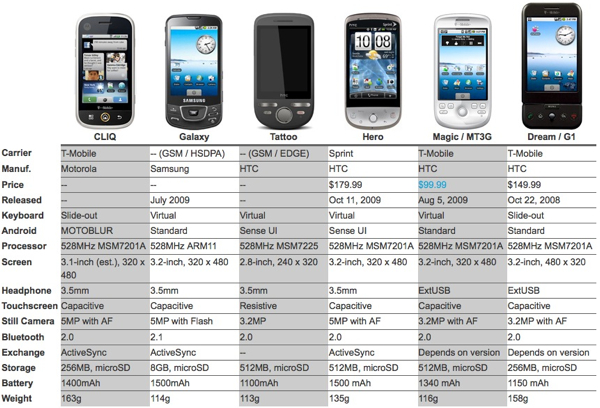
Beyond Flagships: Deconstructing the Strategy Behind Expanding Android Smartphone Series
The modern smartphone market is a far cry from the simple days of a single flagship and a budget alternative. Today, consumers are met with a dizzying array of choices, not just from different brands, but from a multitude of sub-brands and product series within a single manufacturer’s portfolio. We are witnessing a strategic proliferation of smartphone lineups, where companies like Realme, Xiaomi, and Samsung are meticulously carving out new niches with dedicated series. This trend, exemplified by the recent introduction and planned expansion of new product lines, isn’t random; it’s a calculated and complex strategy designed to capture every possible consumer segment. This expansion from a few core models to a vast, multi-layered catalog of Android phones is reshaping the industry.
This article delves deep into the business strategy behind the ever-expanding universe of Android smartphone series. We will explore why brands are launching more lineups, how they differentiate these new models technically, and what this means for the broader ecosystem. Most importantly, we will provide a practical framework for consumers to navigate this crowded landscape, helping you cut through the marketing noise to find the device that truly fits your needs. Understanding this industry shift is crucial for anyone following the latest Android news and looking to purchase their next mobile device.
The Grand Strategy: Why Smartphone Brands Are Expanding Their Lineups
The decision to launch a new smartphone series is a significant strategic move rooted in the hyper-competitive nature of the global market. It’s a multi-faceted approach aimed at achieving market saturation, neutralizing competitors, and building stronger brand ecosystems. At its core, this strategy is about leaving no stone unturned and no consumer un-catered for.
The Art of Hyper-Segmentation
The primary driver behind this trend is market segmentation—the practice of dividing a broad consumer market into sub-groups of consumers with common needs or characteristics. In the past, segmentation was simple: high-end, mid-range, and budget. Today, it’s about “hyper-segmentation.” Brands are identifying and targeting micro-niches. For example, within the $150-$300 mid-range bracket, there might be segments for:
- The Performance Seeker: A user who prioritizes a powerful chipset for gaming over camera quality.
- The Content Creator: A user who wants the best possible camera and display, even if it means a slightly slower processor.
- The Battery Champion: A user whose sole priority is multi-day battery life for work or travel.
By creating distinct series—for instance, a “GT” series for performance, a “Pro” series for cameras, and a “Note” series for large screens and productivity—a brand can create a tailored product for each of these personas. This prevents a potential customer from looking to a competitor who might offer that specific combination of features.
Filling Every Price Gap
Competitors are always looking for gaps in a brand’s portfolio. If a manufacturer has a popular phone at $200 and their next model is at $350, they leave a massive $150 window wide open for rivals to exploit. Launching a new series or expanding an existing one allows a company to strategically place devices at key price points—$225, $275, $325—effectively building a “wall” of products that makes it difficult for competitors to gain a foothold. Samsung is a master of this, with its Galaxy A, M, and F series covering nearly every conceivable price point below its flagship S series, ensuring there’s a Samsung device for almost any budget.
Brand Building and Marketing Momentum
Launching a new product line generates buzz and fresh marketing opportunities. It allows a brand to create a new narrative. A “Note” series, for example, immediately evokes a sense of productivity and large-screen utility, even if the devices themselves are budget-oriented. This branding helps differentiate products in a sea of similar-looking Android gadgets. It also re-engages the media and tech community, creating a new cycle of reviews, discussions, and social media chatter, which is invaluable in maintaining mindshare in a fast-moving industry.
The Anatomy of Differentiation: How New Smartphone Series Are Forged
Creating a new smartphone series that feels distinct yet fits within a brand’s overall portfolio is a delicate balancing act. Manufacturers leverage a specific set of components and design principles to establish a clear hierarchy and purpose for each new line. Understanding these levers of differentiation is key to decoding a brand’s product strategy.

The Chipset Chess Game
The System-on-Chip (SoC) is the heart of any smartphone and the most significant point of differentiation. Brands carefully select chipsets to define a device’s performance tier and price. For example, a new entry-level series might launch with a modest processor like the Unisoc T612 or a MediaTek Helio G-series chip, prioritizing cost-effectiveness and basic efficiency. As the series expands upwards, we would expect to see subsequent models adopt more powerful mid-range SoCs:
- Lower Mid-Range: MediaTek Dimensity 6000 series or Qualcomm Snapdragon 4 Gen series. These offer 5G connectivity and improved efficiency.
- Upper Mid-Range: MediaTek Dimensity 7000/8000 series or Qualcomm Snapdragon 6/7 Gen series. These provide a near-flagship experience, capable of handling intensive gaming and multitasking.
This tiered approach allows a single series name (e.g., “Note”) to span a wide range of performance capabilities and price points, from a “Note Lite” to a “Note Pro+ 5G”.
Display Technology and Design Language
The screen is a primary user interface and a powerful tool for segmentation. A base model in a new series might feature a 720p (HD+) LCD panel with a standard 60Hz or 90Hz refresh rate. To justify a higher price for a “Pro” or “Plus” version, brands will typically upgrade the display in several ways:
- Resolution: Moving from 720p to 1080p (FHD+) for a sharper image.
- Panel Type: Upgrading from LCD to AMOLED for better contrast, deeper blacks, and more vibrant colors.
- Refresh Rate: Increasing from 90Hz to 120Hz or even 144Hz for smoother scrolling and animations.
- Brightness: Higher peak brightness for better outdoor visibility.
Design language—the materials, colors, and overall shape—also helps create a family look while allowing for subtle upgrades. A base model might use a plastic frame and back, while a more premium version could incorporate a glass back or a metallic-finish frame to convey a higher-quality feel.
Camera Systems: The Megapixel Marketing Machine
The camera is one of the most heavily marketed features of any smartphone. Brands create differentiation by varying the sensor quality, lens count, and software features. A typical upgrade path within a new series looks like this:
- Base Model: A simple dual-camera setup with a low-to-mid-resolution primary sensor (e.g., 13MP or 50MP with pixel binning) and a secondary depth or macro sensor of limited utility.
- Mid-Tier Model: Adds a functional ultrawide lens, a higher-resolution primary sensor, and potentially better image processing software.
- Top-Tier Model: Features a high-resolution primary sensor (e.g., 108MP or 200MP), often with Optical Image Stabilization (OIS) for better low-light performance, a higher-quality ultrawide camera, and perhaps a dedicated telephoto lens.
It’s crucial for consumers to look beyond megapixel counts and consider factors like sensor size, aperture (f-stop), and the presence of OIS, which have a greater impact on final image quality.
The Ripple Effect: Implications for the Android Ecosystem and Consumers
The strategy of product line proliferation has profound consequences, creating a complex dynamic of benefits and drawbacks for both the market and the end-user. While it fuels competition, it also introduces significant challenges that can impact the consumer experience.
The Paradox of Choice and Decision Fatigue
On the surface, more choice seems like a clear win for consumers. However, psychological studies show that an overabundance of options can lead to “decision fatigue” and anxiety. When a single brand offers dozens of Android phones with overlapping features and marginal price differences, the selection process becomes overwhelming. A consumer might struggle to discern the meaningful difference between a Realme C67, a Realme 12, and a potential new Realme Note model, all priced within a narrow window. This complexity can lead to buyers making a suboptimal choice or simply defaulting to the most heavily marketed product, not necessarily the best one for their needs.
Market Cannibalization and Brand Dilution
For manufacturers, this strategy carries the inherent risk of “cannibalization,” where a new product’s sales come at the expense of an existing product from the same company. Does a new $250 phone in the “Note” series attract a new customer, or does it simply steal a sale from the brand’s own $230 “C” series phone or its $270 “Number” series phone? If not managed carefully, a brand can end up competing with itself, increasing marketing and logistics costs without a proportional increase in overall market share. Furthermore, flooding the market with too many similar devices can dilute the brand’s identity and weaken the perceived value of its flagship offerings.
The Upside: Hyper-Competition Breeds Value
Despite the downsides, there is a significant silver lining. This intense internal and external competition forces brands to be more aggressive with their pricing and feature sets. To make a new series stand out, a manufacturer might equip it with a feature typically found in a more expensive device, such as a 120Hz AMOLED screen or ultra-fast charging, at a lower-than-expected price. For the savvy consumer who is willing to do their research, this environment creates incredible opportunities to find a device that offers exceptional value for money. The constant stream of Android news about these launches pushes the entire industry forward, making premium features more accessible to the mass market over time.
A Practical Guide: Navigating the Crowded World of Android Gadgets
With a new smartphone seemingly launching every week, how can you make an informed decision? The key is to shift from a product-focused mindset to a needs-focused one. Here are actionable steps and best practices to find the perfect device for you.
Step 1: Define Your Personal Priorities
Before you even look at a single phone, take a moment to list your top three to five priorities. Be honest about how you use your device.
- Are you a gamer? Prioritize the chipset (look for higher-end Snapdragon or Dimensity models) and a high-refresh-rate screen.
- Is your phone your primary camera? Focus on camera specs like OIS, sensor size, and look for the inclusion of versatile lenses like ultrawide and telephoto.
- Are you a power user who’s always on the go? Battery capacity (measured in mAh, with 5000mAh being a great standard) and fast charging speed (measured in watts) should be your top concerns.
- Do you consume a lot of media? A large, high-resolution AMOLED display and stereo speakers will provide the best experience.
This priority list will be your compass, helping you instantly filter out 90% of the options that don’t align with your core needs.

Step 2: Decode the Spec Sheet Like a Pro
Marketing can be misleading. Learn to look past the headline numbers and understand what really matters:
- Processor: Don’t just see “Octa-Core.” Look up the specific model (e.g., Snapdragon 7s Gen 2 vs. Dimensity 7200). A quick search for benchmarks will reveal its true performance level.
- Storage: Look for “UFS” (Universal Flash Storage) over older “eMMC” technology. UFS is significantly faster and makes the entire phone feel snappier, from opening apps to saving photos.
- Software Support: This is crucial. Find out the manufacturer’s update promise for that specific series. How many years of Android OS upgrades and security patches will it receive? A phone with a two-year-old security patch is a liability. Brands like Google and Samsung generally offer the best long-term support.
Step 3: Seek Out Independent, In-Depth Reviews
Once you have a shortlist based on your priorities and a basic spec comparison, dive into reviews from trusted, independent tech journalists and creators. Don’t just watch the “unboxing” or “first impressions” videos. Look for full, in-depth reviews that cover:
- Real-world battery life tests (not just the mAh number).
- Unedited camera samples in various lighting conditions (daylight, low light, portrait).
- Sustained performance and thermal throttling during gaming.
- An analysis of the software experience, including bloatware and user interface quirks.
These reviews provide the real-world context that a spec sheet can never offer.
Conclusion: An Informed Consumer is the Ultimate Winner
The proliferation of smartphone series across the Android landscape is a direct reflection of a mature and fiercely competitive market. It is a deliberate strategy by manufacturers to segment the market with surgical precision, ensuring there is a tailored device for every conceivable niche and price point. While this creates a complex and often confusing environment for buyers, it also fuels a race to the top on value, pushing brands to deliver more features for less money.
For consumers, the takeaway is clear: the power has shifted into your hands, provided you are willing to be informed. By moving beyond marketing hype, defining your personal needs, and learning to decode the true value behind a spec sheet, you can navigate this crowded market with confidence. The endless stream of new Android phones and Android gadgets is not a challenge to be feared, but an opportunity to be seized. In this era of hyper-choice, the best phone is not the one with the biggest numbers, but the one that is the right tool for you.



